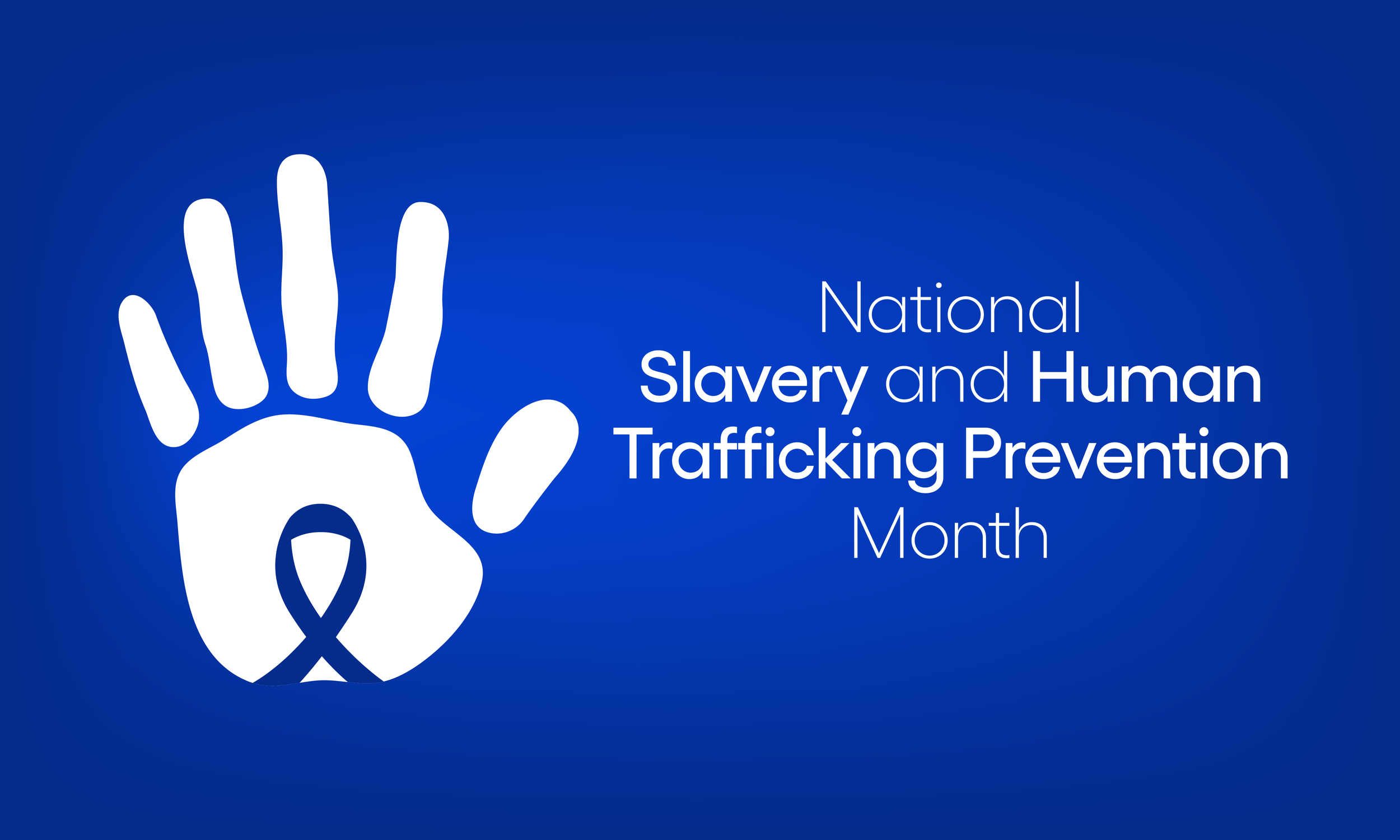January is Human Trafficking Awareness Month
January is Human Trafficking Awareness Month. Human trafficking is the recruitment or transportation of a person for commercial sex acts by force who has not yet reached the age of 18. This month acknowledges the “commitment to protect and empower survivors of all forms of human trafficking, to prosecute traffickers, and to bring an end to human trafficking in the United States and around the world.” (Human Trafficking Awareness Month)
Human trafficking is a critical issue where the defining feature is the exploitation (not necessarily the movement, although it is common) of minors. In Texas alone, 79,000 minors and youth were victims of human trafficking in 2016. Of these, 70.6% of the victims were Black, Latino, or Hispanic. Since human trafficking disproportionately impacts children in BIPOC, LBGTQIA+, and other communities that are underserved and marginalized, human trafficking directly intersects with the child welfare space. It is imperative to understand the risk factors, indications, and potential responses to human trafficking.
Fast Facts on Human Trafficking and the Child Welfare System from Polaris:
In December 2014 1,607 of trafficking cases involved minors.
121 cases referenced the child welfare system.
The top 5 nationalities of minor victims:
United States
Mexico
China
Guatemala
Russia
Top three trafficking venues:
hotel/motel based
Online ad
Street-based
Demographics (keep in mind this is not always provided):
1,393 females
231 males
< 10 transgender
Risk Factors (National Center on Safe Supported Learning Environments):
Physical/sexual abuse
Houseless/Runaway
Insecure attachment
Domestic violence
Poverty
Addiction
System involved (CPS, Juvenile Detention)
Legal status
LBGTQIA+
Internet/social media
Intersectionality between Sex Trafficking and Labor Trafficking
Sex Trafficking
History of childhood physical or sexual abuse
Mental health issues or disorders
Academically off-track
Poor self-esteem
Has run away from home more than once
Family rejection related to identifying as LGBTQ
Lives in a shelter or group home
Uses drugs or involved with romantic partners who do
Family members who have bought sex or been trafficked
Parents who abuse drugs
Lives in an area with a large influx of cash-rich workers or tourists
History of arrests for juvenile status offenses, such as truancy or underage possession of alcohol
Labor Trafficking
Recent migration or relocation
Member of marginalized or disadvantaged community
Undocumented or unstable immigration status
Unaccompanied minor
Physical disability
Both
Current or past involvement in the child welfare system
History of running from out-of-home care
Lack of social support
Poverty
Learning disabilities or developmental delay
High number of adverse childhood experiences
Family dysfunction or instability
Current runaway or homeless status
Involved with or targeted by gangs
Indicators of Human Trafficking (United Nations)
Physical
Tattoos with names
Multiple cell phones
Bruises or injuries
History of sexual abuse
Large amounts of unexplained cash, expensive items, and hotel keys
Lack of ID
Behavioral
History of running away
Not enrolled in school
Trouble speaking for themselves
Withholds name, age, or demographic
Psychological
Fearful or lacks an appropriate level of fear
Gaps in memory
Scripted answers
Suicidal ideation or attempt
Flat affect
Medical
Poor dentition
Self-harm
Presenting with acute physical/sexual assault
Chronic lack of care
Looks sleep-deprived
Although human trafficking is certainly a prevalent issue, not all hope is lost. Many organizations, community members, and survivors are working tirelessly to bring a stop to human trafficking. In fact, there are many ways you can get involved in the fight against human trafficking. The list below provides possible avenues of involvement and resources to learn more about human trafficking.
Potential Responses (US Department of State):
Increase personal knowledge of human trafficking
If you suspect somebody is a victim of human trafficking, contact the 24-hour National Human Trafficking Hotline
Call:1-888-373-7888
Text: 233733
TTY: 711
Implement trauma-informed practices at your workplace and community to raise awareness

